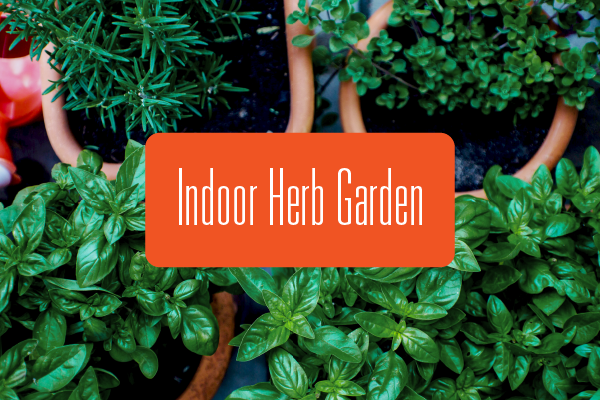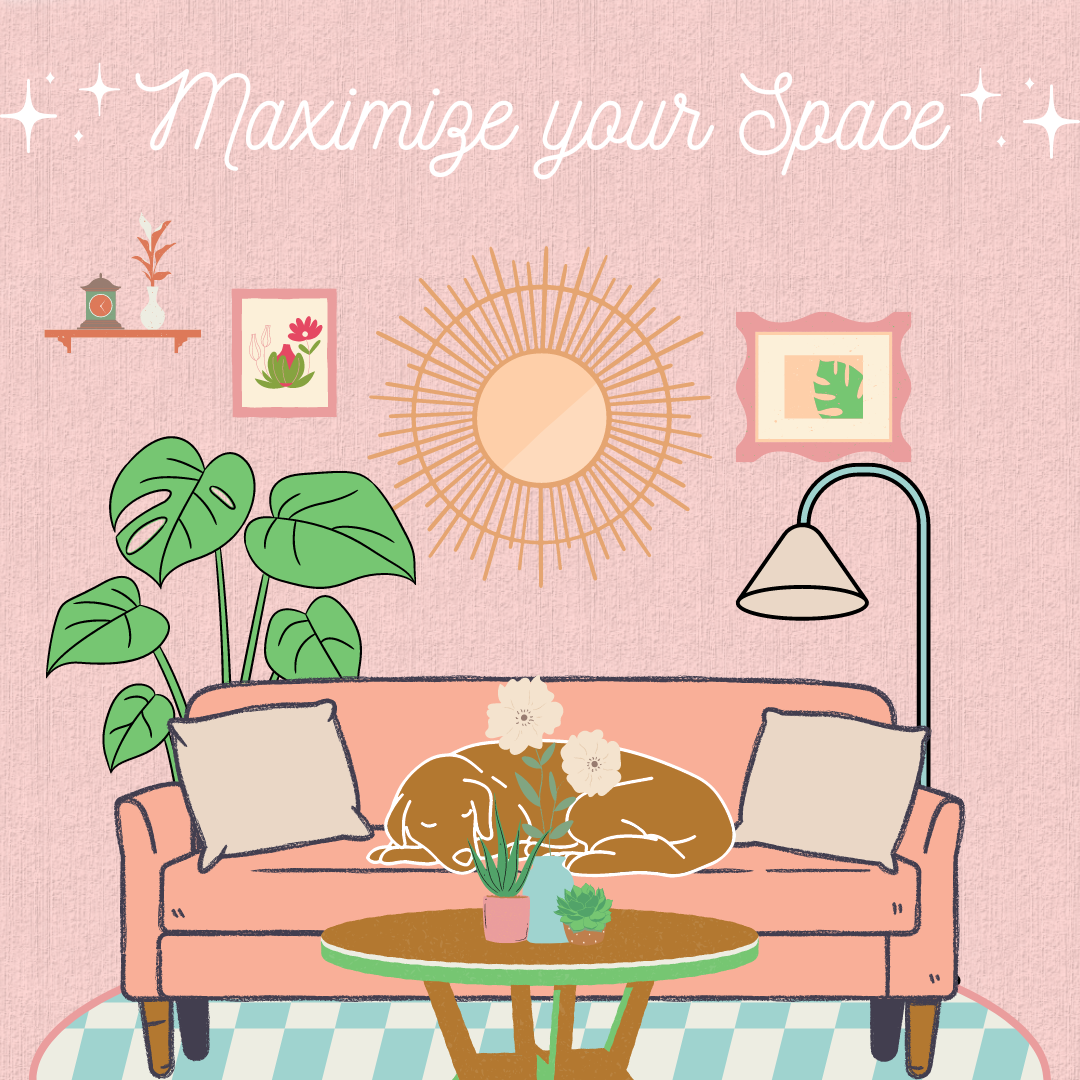Growing Herbs Indoors over Winter
Growing Herbs Indoors over Winter

Looking for a way to bring the garden inside this winter? Try your hand at growing herbs indoors! Perfect for adding a little oomph to your meals and some beauty to your space. Our friend, Maggie Furr, of the University of Illinois’ Metropolitan Food and Environmental Systems program(MFST) has put together this handy tutorial to get you started! Maggie has been helping us plan the Urban Farm we are going to build on Healey St., so we thought she’d be the perfect person to teach us about indoor growing!
Supplies
Seeds
To start you'll need seeds! You can skip ahead to see some herbs that are well suited for indoor life.
Container
If you are starting the herbs from seeds, then you will need some shallow containers for easier germination. One easy and economical example would be old cardboard egg cartons!
Potting Mix
You’ll also need some potting mix. There are several types of potting mixes. The two you are most likely to use would be a generic mix, like Miracle Grow, or a cactus mix. Generic potting mix is a good soil mix that holds moisture well, but not all plants/herbs want a lot of moisture. Cactus potting mixes are better for low moisture plants because they are made up of soil, perlite, and peat moss. This mixture of materials increases water drainage and prevents soil from compacting. You can also make your own by mixing a “regular” Miracle Grow with sand, perlite, or peat moss on your own!
Labels
If you decide to start multiple herbs, then you can have some fun whipping up labels to help you keep track of what’s planted!
Starting your Seeds: The Egg Carton Method
To begin, fill the egg carton loosely with the necessary potting mix and mist the soil so that it’s moist.
Carefully place 1-2 seeds in each dimple of the egg carton and mist again.
Cover very lightly with more potting mix and mist one last time.
Place the egg carton in a place where it will get around 4 hours of sunlight per day.
It should take around 2 weeks for the herbs to germinate. Eight to ten weeks after the seeds have sprouted, they can be transplanted into a bigger container. All of the seedlings for one type of herb can be moved to the same container. A 5-6” wide container will be a perfect new home for your new plant “babies”.
What are the easiest Herbs to grow?
Lots of herbs can easily be grown inside. For example, basil, chives, mint, oregano, parsley, and thyme are super convenient to grow inside because they are easy to pick. Any herb can be grown inside, but to make things easier for you make sure that the herb(s) you choose will have access to adequate sunlight and are easy to pick.
Oregano
6-8 hours of direct sunlight per day
Oregano should have 6-8 hours of direct sunlight and be kept around room temperature (72 degrees). Oregano prefers to be in a potting mix that drains well, so a Cactus mix will be perfect for Oregano. Oregano can get root rot very easily so make sure to only water once a week when the soil is completely dry. This herb is ready to be harvested when it reaches 6” in height. When you harvest, make sure you leave 2” at the bottom to ensure continued growth.
Basil
6 hours of sunlight per day
Basil grows best when it has 6 hours of sunlight and is kept at room temperature. Basil should be potted in either a regular potting mix or a mixture of 50% Cactus potting mix/50% compost. The compost will act as a fertilizer to provide the necessary nutrients for your herbs, but other fertilizers can work as well. Make sure to continually add compost or another fertilizer to the pot to give the basil the nutrients it needs. Keep the soil moist by watering once a week. To keep Basil growing the best, you should pinch the flowers off as they appear. The newer the leaves, the more flavor they will have. Basil can be tricky to harvest, so check out this video to learn the best method.
Thyme
6 hours of direct sunlight per day
Thyme also likes to have 6 hours of direct sunlight and a temperature around 71 degrees. Thyme prefers to have dry, well-drained soil, so a Cactus mix would be great. Water once a week or when the soil is super dry. Thyme is pretty resilient and if you forget to water it every once-in-awhile, it should be fine. To harvest thyme, wait until it reaches 6” tall and cut the foliage as needed leaving 3” at the bottom.
Parsley
4-6 hours of direct sunlight
Parsley grows best in 4-6 hours of direct sunlight at room temperature. Any regular “all-purpose” potting mix will work. Make sure to water 1-2 times a week when the top few inches of the soil feels dry. For harvesting purposes, wait until the plant is 6” tall and cut the stems 2” from the base of the parsley.
Chives
4-6 hours of direct sunlight
Chives, just like Parsley, grow best in 4-6 hours of direct sunlight, at room temperature. Any regular “all-purpose” potting mix will work. Make sure to water 1-2 times a week when the top few inches of the soil feels dry. For harvesting purposes, wait until the plant is 6” tall and cut leaves as you see fit. Make sure to leave 2” at the bottom that you don’t harvest.
How to Harvest Herbs
When harvesting herbs, you need to be careful to not over harvest. Harvesting too much of the plant at a time can be stressful to the herb and it won’t continue to grow. For the majority of herbs, you want to leave the bottom 2” of the plant unharvested to promote new growth, and keep it from becoming overstressed!
Stay Tuned…
Once you've got some herbs, try out some of these tasty recipe suggestions!
More Resources
Growing herbs from seeds can be tricky, so we’ve put together a list of more resources to check out:
- Growing herbs from seeds
- U of I Extension: How to grow popular herbs
- U of I Extension: Try growing culinary herbs
- This video is also an excellent resource navigating the struggles of starting an herb garden for the first time.
- Check out the U of I Extension's herb directory for more information on various herbs
- More sustainable alternatives to peat moss in soil
You might also like
Royse + Brinkmeyer News










